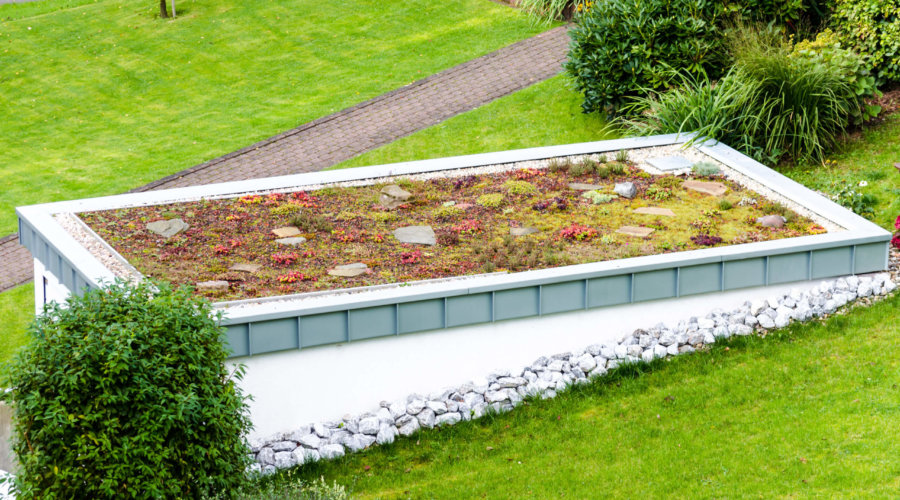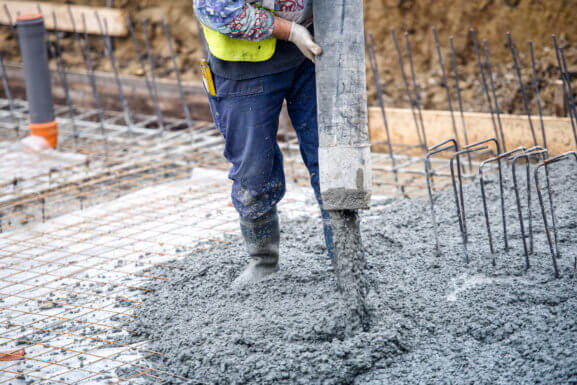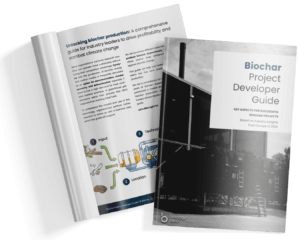Green roof substrates can be significantly enhanced by using biochar instead of materials such as peat, lava rock or expanded clay. This provides both improved water storage capacity and a long-term supply of nutrients for the plants. In addition, the biochar reduces the weight of the roofing material.1Cuong T.N. Cao, Claire Farrell, Paul E. Kristiansen, John P. Rayner, Biochar makes green roof substrates lighter and improves water supply to plants, Ecological Engineering, Volume 71, 2014, Pages 368-374, ISSN 0925-8574
Advantages of Biochar for Roof Greening
- Significant increase in water retention2Cuong T.N. Cao, Claire Farrell, Paul E. Kristiansen, John P. Rayner, Biochar makes green roof substrates lighter and improves water supply to plants, Ecological Engineering, Volume 71, 2014, Pages 368-374, ISSN 0925-8574
- Prolonged lifespan of roof vegetation
- Cleaning of gray water
- Reduced weight of roof covering
- Improvement of the ecological footprint by replacing materials such as expanded clay, lava, Eifel volcanic quarry or peat
Studies show that the use of 30 – 40 percent biochar in the substrate can significantly increase water retention after a rainfall. In that case, additional water is available to plants.3Cuong T.N. Cao, Claire Farrell, Paul E. Kristiansen, John P. Rayner, Biochar makes green roof substrates lighter and improves water supply to plants, Ecological Engineering, Volume 71, 2014, Pages 368-374, ISSN 0925-8574
In addition, substrates with a high biochar fraction (approx. 40%) are lighter, therefore a larger amount of substrate can be inserted4Cuong T.N. Cao, Claire Farrell, Paul E. Kristiansen, John P. Rayner, Biochar makes green roof substrates lighter and improves water supply to plants, Ecological Engineering, Volume 71, 2014, Pages 368-374, ISSN 0925-8574. An advantageous property of biochar is that it is ideal for handling when installing the roofing substrate due to its pourability and adaptable grain size. Another useful property is its water purification ability, which can be used, for example, in a green roof converted as a gray water treatment plant.
Eifel volcanic quarry, lava rock expanded clay and peat are non-regenerative resources that need to be replaced. In addition, biochar on the roof reduces the carbon footprint of the building by storing carbon in a stable form over the long term. As a result, carbon emission certificates (CO2 Removal Certificate, CORC) can be sold when a green roof substrate with biochar is used.
Degree of Development
Green roof substrates with biochar have not yet been widely used. Compared to earth substrates containing volcanic rock for roofs, there are as yet no substrates with biochar that have standardized parameters, such as pH value, nutrient salts or trace substance and iron contents.
However, replacing porous lava rock and similar materials with highly porous biochar is technically feasible and is also becoming increasingly attractive economically.
Application
For specific use, the biochar has to be carefully selected, because every biochar is different due to the feedstock and the way of production. In particular, the granularity and pourability play a crucial role in the installation of the substrate as it is tipped and pumped onto a roof with compressed air. How thick a green roof is, how much biochar it contains and how it is layered must be adapted to the requirements of the planting, the orientation to the sun, the load and the slope of the roof.
So far, greening substrates have consisted, for example, of boiler sand or clay sand, quality-assured woody humus, mineral clay granules, woody humus or lava. Due to its high pore content, biochar can also replace lava rock.
The biochar must not be used pure, it must either be loaded with a fertilizer or be composted. Only then the potential for adsorption and long-term release of substances will unfold.
Dosage
The dosage of biochar in a green roof substrate varies depending on the existing conditions and the desired results. As a rule, the addition of about 15 percent by volume of enriched biochar is a good starting point.
Approval & Certification
For the application of biochar in green roof substrates, certification according to EBC-BasicMaterial or EBC-ConsumerMaterial is recommended or an adequate biochar quality. A higher biochar quality should be applied in case the green roof is used as a food garden or any feeding purpose, or for grey water cleaning, etc., which should be proven by independend analysis.


Sources



